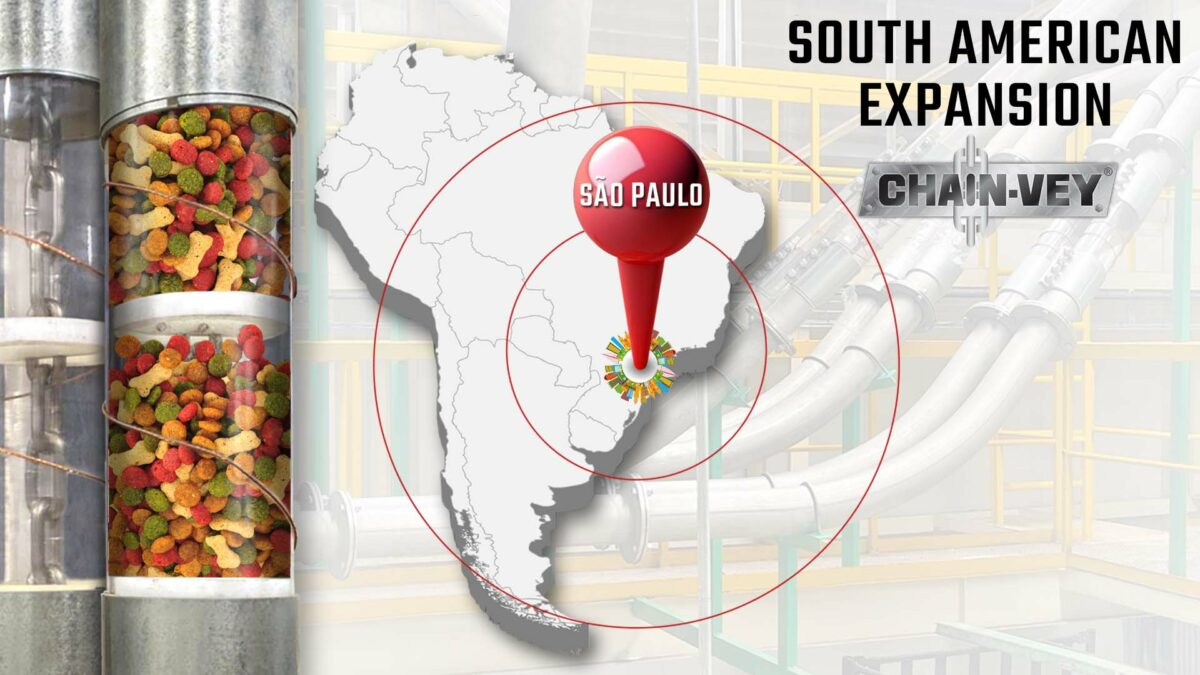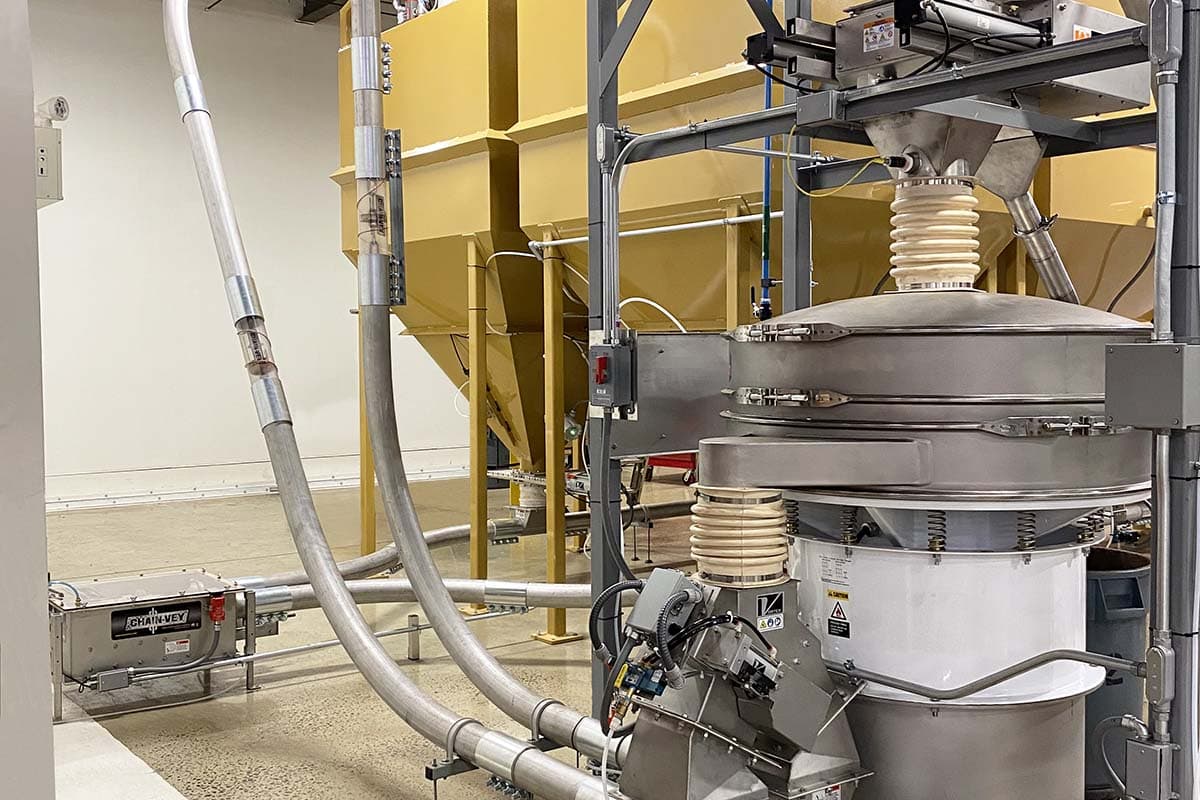The conveying of ingredients, foods, and bulk solids all require energy. However, the loss of energy through excess motion of air, noise, and heat varies greatly among conveying options. Usually, plant engineers have a litany of requirements that, when taken into consideration collectively, tilt the scales toward one type of conveyor over another. But when you break down the topic of low energy conveyance into a more thorough analysis, it can affect the outcome of which conveyor is ideal for a specific layout or process.
Here are the main types of mass flow conveyors — which will be compared in this article — in respect to their energy usage:
• Tubular drag conveyors
• Screw auger conveyors
• Pneumatic conveyors
• Bucket conveyors
Straw-Man Fallacies and Practical Considerations
A zero-wasted energy conveyor is usually not the goal. Even trying to engineer a zero-wasted energy conveyor would almost certainly impact the cost of some other major benefit. It is probably best viewed as a straw-man fallacy because no manufacturer is trying to make such a conveyor. But probably the closest thing to a zero-wasted energy conveyor is a well-oiled bucket elevator. This is assuming a single vector direction. Bucket elevators are, in a Newtonian view, very direct in their conversion of electrical energy into mechanical motion. There is minimal air resistance (or wasted energy in the movement of air). There is no rubbing of surfaces, such as a product inside a metal tube in a tubular drag conveyor. There should not be any significant noise or vibrations, and hence, loss of energy. And a well-maintained bucket elevator chain should move freely enough as a good condition bike chain does.
But what if you need to move more than one direction? Or up, then horizontal, and then a turn?
How Many Vectors Do You Have?
If, say, you need to transport grain from one silo to another area of your facility; and you have just one turn, you’ve already exceeded the capabilities of a traditional bucket elevator conveyor. Screw conveyors are another type of conveyor that can suffer from limited vectors. Sure, flexible screw conveyors exist, but this provides for a modest bend at best. Operators of bucket elevators and flexible screw conveyors are limited to one vector and a simple bend with the latter. In this case, there are plants that begin using several conveyors connected to each other to achieve the directions that want. But with multiple conveyors, there comes a greater chance of complications and compounded energy loss. Typically, the product falls from one conveyor’s outlet into another conveyor’s inlet. This drop point introduces energy loss which usually equates to wasted space as well.
Pneumatic conveyors can handle many bends and turns, but they are the worst offenders in wasted energy. They are noisy and consume typically 5 to 10 times the amount of energy as tubular drag conveyors. Most of the air moved inside a pneumatic conveyor is wasted kinetic energy, and does not directly move the product.
Conveyor System Returns
One point of difference is with conveyors that have returns. Returns are the other half of some conveyors that do not convey the product, and return back to the starting inlet. Returns do introduce some inefficiency because they are added mass and resistance that need to be moved but it is generally just a small amount. Most of the resistance inside tubular drag conveyors are from the drag created by the product. Since returns do not carry the product, there is no added resistance created. Overall, returns introduce only a negligible amount of wasted energy. Screw conveyors are unique in that they do not need returns. Pneumatic conveyors do not need returns either. Bucket elevators do need returns, as do tubular drag conveyors.
Is there a Conveyor Winner?
The most efficient conveyor if you have anything more than a simple one-vector direction is a tubular drag conveyor. It does lose some energy in the friction between the discs and the inner-tubular walls as well as some energy from the product’s drag coefficient and the return. But it only consumes marginally more energy than a bucket conveyor. In fact, it offers exponentially more layout flexibility and consolidation and is many times more efficient than pneumatic conveyors. Tubular drag conveyors create very little sound —meaning very little energy is wasted in vibrations. Overall tubular drag conveyors are some of the most efficient conveyors available.




